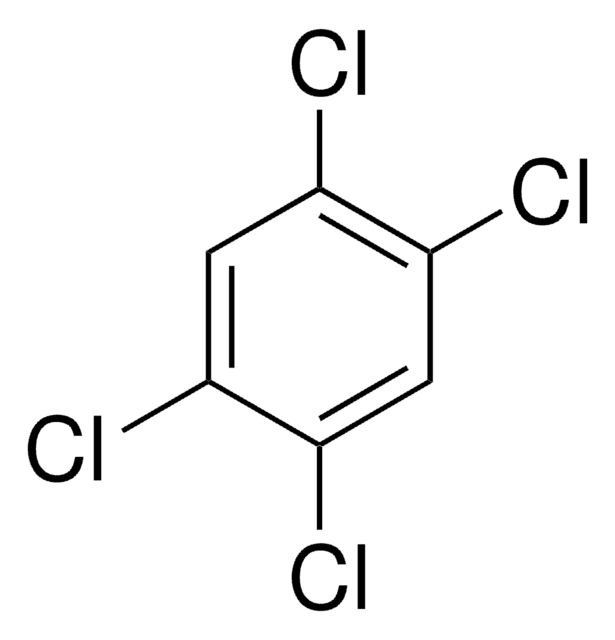07-5350
1,4-diossano
JIS special grade, ≥99.0%
Sinonimo/i:
Diossano, Ossido di dietilene
About This Item
Prodotti consigliati
Grado
JIS special grade
Densità del vapore
3 (vs air)
Tensione di vapore
27 mmHg ( 20 °C)
40 mmHg ( 25 °C)
Saggio
≥99.0%
Stato
liquid
Temp. autoaccensione
356 °F
Limite di esplosione
22 %
Disponibilità
available only in Japan
Indice di rifrazione
n20/D 1.422 (lit.)
pH
6.0-8 (20 °C, 500 g/L)
P. ebollizione
100-102 °C (lit.)
Punto di fusione
10-12 °C (lit.)
Densità
1.034 g/mL at 25 °C (lit.)
Stringa SMILE
C1COCCO1
InChI
1S/C4H8O2/c1-2-6-4-3-5-1/h1-4H2
RYHBNJHYFVUHQT-UHFFFAOYSA-N
Cerchi prodotti simili? Visita Guida al confronto tra prodotti
Avvertenze
Danger
Indicazioni di pericolo
Consigli di prudenza
Classi di pericolo
Carc. 1B - Eye Irrit. 2 - Flam. Liq. 2 - STOT SE 3
Organi bersaglio
Respiratory system
Rischi supp
Codice della classe di stoccaggio
3 - Flammable liquids
Classe di pericolosità dell'acqua (WGK)
WGK 3
Punto d’infiammabilità (°F)
53.6 °F
Punto d’infiammabilità (°C)
12 °C
Scegli una delle versioni più recenti:
Possiedi già questo prodotto?
I documenti relativi ai prodotti acquistati recentemente sono disponibili nell’Archivio dei documenti.
Il team dei nostri ricercatori vanta grande esperienza in tutte le aree della ricerca quali Life Science, scienza dei materiali, sintesi chimica, cromatografia, discipline analitiche, ecc..
Contatta l'Assistenza Tecnica.







